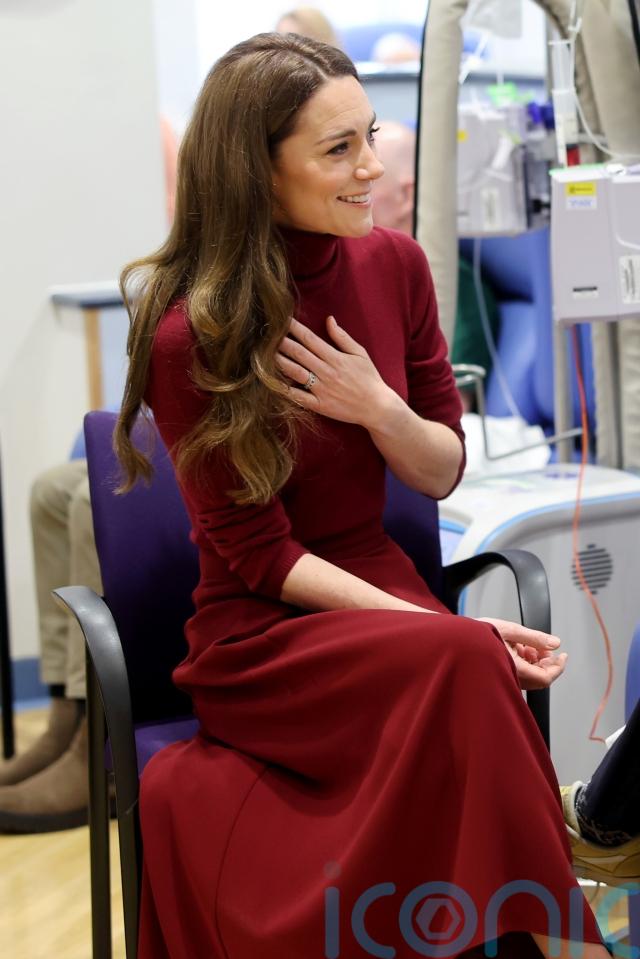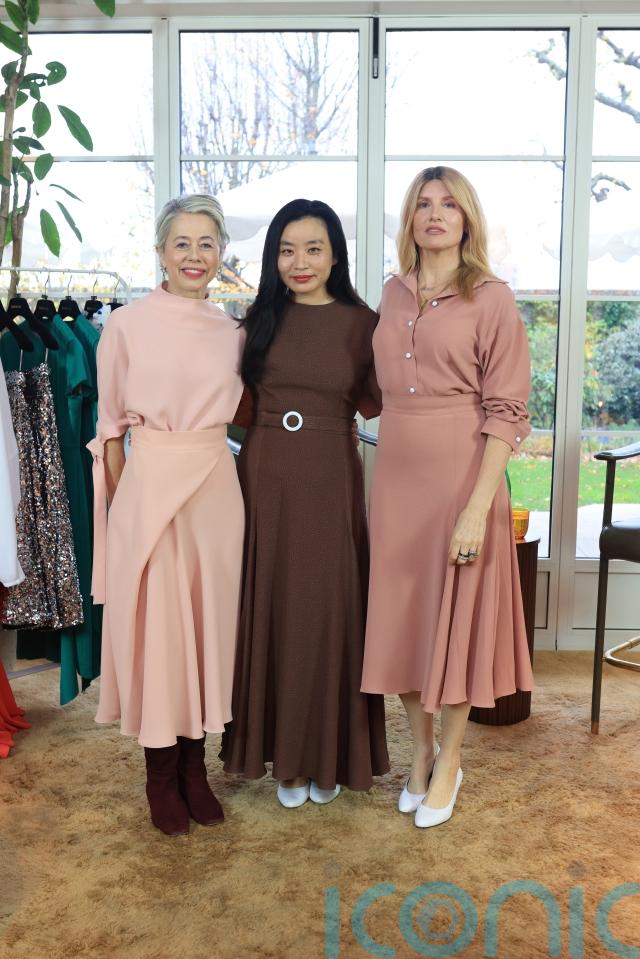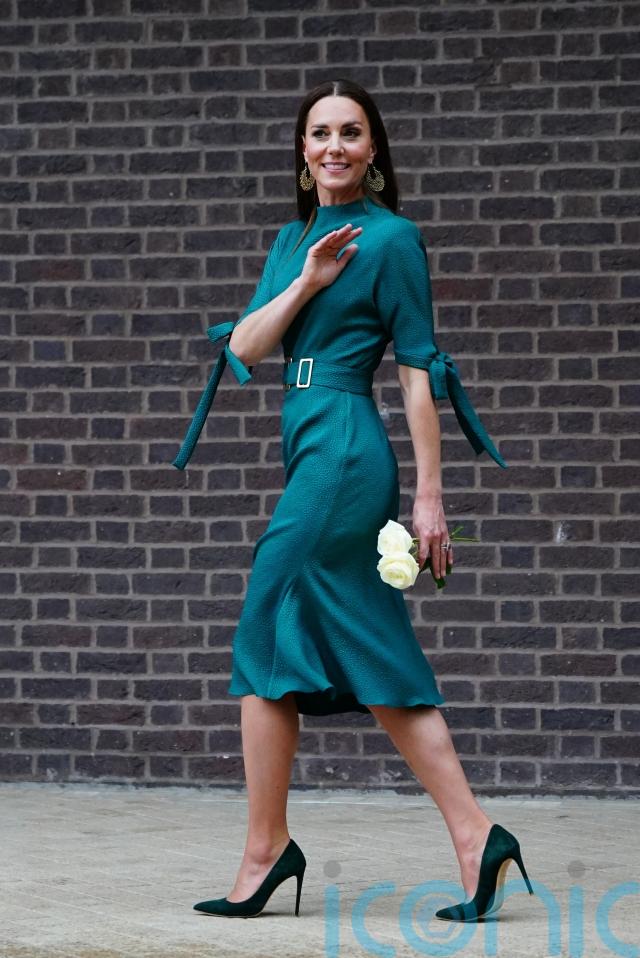
We tend to assume that it’s fashion designers who keep the tyranny of the size-6 silhouette alive: the rail-thin runway model, small sample sizes and the implied suggestion that women must shrink themselves to fit the clothes.
But that certainly isn’t the case for British-Canadian fashion designer Edeline Lee.
“Women don’t fit into five sizes – it’s complete bull****,” she says, with the matter-of-factness of someone who has seen, up close, just how untrue the fantasy really is.
Speaking from her East London studio, where clients regularly strip down to their underwear during fittings, Lee says she hears the private fears and body anxieties that women carry every single day.
“If you get naked with someone, basically it’s a very intimate experience […] you end up having these conversations.”
And those conversations make clear that the idea of a single ‘ideal’ body remains deeply embedded in luxury fashion – even if the public conversation suggests otherwise.
“It’s not [like] the industry [is] saying as a whole, we only believe in skinny teenagers,” Lee stresses. Instead, it’s a logistical system that has barely shifted in decades, especially around sample sizing on runways.
“When you have Fashion Week and you have 15 designers showing on one day […] it becomes easier if they’re all one size […] the second you add diversity and sizing […] it just amplifies [difficulty and cost] so quickly.”
The designer, who graduated from Central Saint Martins in 2008 and is known for dressing powerful women from art-world leaders to senior executives and even royalty, says the system leaves countless women feeling like the body they inhabit is somehow defective.

“That kind of mass idea that we’re all supposed to fit into something, it doesn’t help with insecurities, does it?
“If you don’t fit into those five sizes, you feel like somehow, something’s wrong with yourself.”
Lee, whose brand produces from size 2 to 24 and manufactures exclusively in the UK, argues the problem is structural, not personal.
“Right now, it’s impossible to run a business and have 50 different sizes […] everyone would go out of business.”

But she insists meaningful change is possible. In fact, she says shifting the industry’s ‘standard’ size would make designers’ lives easier too.
“It would actually be easier for all of us […] it’s much easier to grade up and down from the middle rather than to grade from the bottom all the way up.”
But what sets Lee apart from most luxury designers is her daily, unfiltered contact with the women she dresses. Clients walk into her Dalston studio and try on pieces in real time, creating a level of candour rarely seen in high fashion.
“We have women coming here every day […] we might see in a week the same dress on seven different bodies,” she says – a crash course in real-life diversity that most designers never experience.
The fittings expose everything from professional pressure to private emotional turmoil. “We have women who are the only woman on their board […] women who are very practised and need a workhorse wardrobe for TV […] or someone with a very complicated family situation.”
And so her role extends beyond tailoring. “We’re trying to create something that [women] could put on that just makes them feel better […] feel strong and powerful.”
Before conversations about body image became mainstream, Lee was already challenging the fashion world’s silence around women’s lived experience.
She traces the shift to a game-changing 2018 collaboration with classicist Mary Beard. After reading Beard’s book Women And Power, Lee was struck by the historical roots of misogyny.
“Women weren’t allowed to speak in public back then […] and it’s kind of carried through.”
That realisation became the seed of her ‘Women And Power’ speaker series. “I’m always talking about dressing powerful women, and yet everything we do is shown on young, silent women […] why not put the voice of women on the fashion stage?”

So she did. The first presentation featured 35 female speakers from politics, science, music, literature and more. Guests refused to leave and even high-profile attendees were struggling to get in.
“Nobody wanted to leave […] it was so powerful.”

It was the moment Lee understood her audience – and her purpose – more clearly than ever.
Lee’s entire business is built on principles that most labels abandon early: local production, ethical wages and complete independence.
“We pay UK wages in a globalised industry […] it’s a hard thing to compete,” she admits. “But the fact that we can do this and have a platform […] that’s the big thing that I’m really proud of.”
Her designs have been worn by major cultural figures, including the Princess of Wales, whom she calls “a wonderful as an ambassador for British designers”.

But for Lee, the most powerful woman is still the one standing in front of her in the fitting room.
“When [women] feel that they need to stand up front, show up and be in their power. That’s when they look for me.”
And that’s when the real work of challenging insecurities, dismantling ideals and rebuilding confidence, happens.
Subscribe or register today to discover more from DonegalLive.ie
Buy the e-paper of the Donegal Democrat, Donegal People's Press, Donegal Post and Inish Times here for instant access to Donegal's premier news titles.
Keep up with the latest news from Donegal with our daily newsletter featuring the most important stories of the day delivered to your inbox every evening at 5pm.